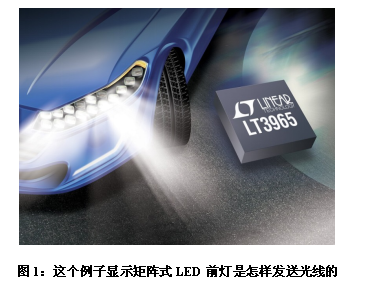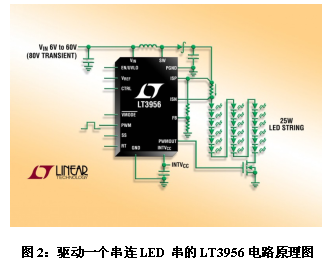In the continuous integration and innovation, the new industrial manufacturing category has risen rapidly and has become the leading force to reshape the industrial structure and lead the trend of human life. The automobile industry, which is known as driving the future transportation of human beings, is particularly eye-catching. From August 30th to September 1st, 2016, AutomoTIve World, Asia's largest automotive technology exhibition, will be stationed in China for the first time, and its debut will be unveiled at the Shenzhen Convention and Exhibition Center. This exhibition will showcase advanced technologies such as automotive electronics technology, vehicle networking technology, EV/HEV/FCV technology, automotive lightweight technology, and auto parts processing technology. With the upgrading of automotive electronics technology, the car headlights will be designed to be more user-friendly. Good car headlights not only make the car more beautiful, but also improve the safety factor of the car. Then let us first discuss the future development trend of the car headlights before the start of the exhibition.
The 40W and 60W incandescent lamps that used to be used in most US homes in the past have been banned from being imported or imported into the US since the end of 2013 (although such lamps are still available), and 75W and 100W lamps have been phased out in 2012. The reason for the elimination of these lamps is that the US Environmental Protection Agency (EPA) requires an increase in the efficacy of electro-optical output. The main reason for this requirement is to help reduce electricity consumption (and therefore power generation) because, in fact, US residential lighting accounts for about 14% of US electricity consumption (source: Energy InformaTIon AdministraTIon). Solid-state LED lights require only about 1/8 of the power to produce the same lumens of light output, so LED lights have successfully entered our world today.
The evolution of illuminators from incandescent lamps to solid-state electronic lamps is similar to the shift in vehicle lighting currently occurring in the automotive industry. Although red LEDs have been used in taillights for more than 10 years, only recently, changes in the interior and forward lighting systems have led to a significant increase in the adoption rate of LEDs. For example, more than 70% of automotive interior lights and more than 45% of instrument display backlighting use LED lights. In contrast, current 55% of daytime running lights (DRL) and approximately 5% of headlights use LED lights. Although the headlights (low beam, high beam, fog lights) represent the biggest business opportunities, but also the market with the lowest penetration rate, many people have discovered this contradiction, I am one of them. One of the main reasons for this apparent contradiction is cost, and automakers are unable to provide LED headlights at the price consumers are willing to pay.
Before discussing the background reasons for the low adoption rate of headlights, it is useful to know why many drivers and even original equipment manufacturers prefer LED lighting solutions. Reasons for LED lighting solutions to be preferred include, but are not limited to, the following:
• Performance and design flexibility – LEDs offer design flexibility and LEDs offer a wide range of dimming capabilities. Remember that the human eye is very sensitive to small deviations in light output.
· Energy efficiency and low CO2 emissions – LEDs are not only highly efficient, they reduce the energy required to power them, but they also have a significantly extended life cycle.
· Costs - This feature seems counterintuitive, but in non-headlight applications, continued cost reduction, durability and superior quality have made LED a new standard for ultimate consumer value.
· Regulatory - Many government regulations dictate requirements for daytime running lights and headlights, as well as other lighting applications, which have led to increased demand for LED lighting.
Audi is widely regarded as the leader in LED applications, and I don't think anyone would be surprised by this because Audi uses LEDs in almost any external automotive lighting application. Anyone who sees Audi's famous "eyebrow" daytime running lights in the rearview mirror will be very eye-catching. In addition, Audi was the first car manufacturer to use LED headlights and was used in the 2004 Audi R8.
So why aren't LED headlights as popular as LEDs used in other forms of automotive lighting? The answer is of course the cost. Other products that can replace LED headlights include incandescent, halogen or high-density discharge (HID) xenon lamps. The price of comparable LED lamps may be 100% higher than halogen headlamps (first introduced in Europe in 1962, but not used in the United States in 1978). HID xenon lamps (to achieve comparable performance with HID xenon headlamps, need a LED solutions that are much more expensive than lower performance halogen lamps) 1.5 times higher. Incidentally, the first HID xenon headlights appeared in the 1991 BMW 7 Series.
In general, the brightness of the LED headlights is between the halogen and HID lamps, but the LEDs are much more focused and can be controlled to produce different shapes. In addition, due to the small size of the LEDs, various placements and mounting methods are allowed, and automotive manufacturers can develop LED lights and assembly methods in a variety of shapes to perfectly match the model. Although LEDs do not generate heat when illuminated, they do generate a certain amount of heat at the bottom of their emitters when energized, thus posing a potential risk to adjacent components and connecting cables. For this reason, LED headlamps require a cooling system (such as a radiator or fan) to avoid melting. In addition, this type of cooling system is located in the engine compartment, and the engine compartment is not a cool area for other systems that need to maintain a suitable temperature. This is another reason why LED headlamps are more difficult to design and more difficult to use in cars, and therefore more expensive than HID lamps.

However, the story has not been finished yet. A recent article in the US industry media stated that Audi has begun offering optional laser high beam lights in the high-performance R8. This kind of laser light is very good, it can adjust itself when the headlights remain open, so that the light does not fall on the vehicle in front, even up to the front 8 cars. Compared to LED headlights, Audi's laser spotlights can reach distances of more than 2 times (over 500 feet), providing drivers with greater visibility.
The latest IC helps LED headlights
In order for an incandescent lamp to produce a light output, all that is required is that a current flows through the filament. In contrast, the LED requires a dedicated integrated circuit to drive.
Today, one of the key performance features that LED driver ICs must have is sufficient dimming. The LED is driven with a constant current whose DC current value is proportional to the LED brightness. To change the LED brightness by controlling the LED current, there are two dimming methods. The first is analog dimming, which proportionally reduces the LED's DC current value by reducing the constant LED current value. Reducing the LED current may result in a change in LED color or inaccurate LED current control. The second method is digital or pulse width modulation (PWM) dimming. PWM dimming turns the LEDs on and off at a frequency equal to or higher than 100 Hz, which is not noticeable to the human eye. The PWM dimming duty cycle is proportional to the LED brightness, while the LED current value at turn-on remains at the value set by the LED driver IC, maintaining a constant LED color at high dimming ratios. In some applications, this PWM dimming method achieves a 3000:1 dimming ratio.

VIN 6V to 60V: VIN 6V to 60V
(80V TRANSIENT): (80V transient)
25W LED STRING: 25W LED string
It is believed that although the current market penetration of LED headlamps is low, it is clear that the performance improvement is too attractive, and the current attitude of automakers to LED lamps cannot last for too long. Reasons for attractiveness include: improved driver safety, the ability to flexibly change the shape of the body, energy savings, and purely for a good looking look. We all know that the car looks good and we want to buy it. When you are driving around in the future, please take a look at the matrix lighting, because when you look at the rearview mirror, you will find that the use of matrix lighting and LED headlights will increase dramatically.
LED headlights have a natural advantage in terms of function and performance. If you can overcome the heat and cost issues, it is undoubted that most of the car headlights are LED world. For the inspiration and spark of more automotive technology improvements, there is an excellent opportunity for you. AutomoTIve World 2016 will be held at the Shenzhen Convention and Exhibition Center on August 30th. The exhibition will bring together outstanding exhibitors from the industry, excellent automotive engineers from automobile OEMs, automotive suppliers and OEMs. Etc. will also be gathered together. In the same period, a number of automotive electronics technology seminars will be held to gather prominent figures and experts from the automotive industry to discuss hot topics in the industry, examine new developments in the industry, and explore new opportunities in the industry.
Scientific Electronic Calculator
Scientific Electronic Calculator advantage:
Scientific calculator for student general purpose calculator office electronic calculator,kinds of function computing capability,suitable for high school students;,Check&correct function ;,Two lines LCD display;Removable protective cover;Imported chips are widely used in high school, junior high school, and other uses.

Scientific Electronic Calculator,Science Calculator,Function Scientific Calculator,Science Pocket Calculator
Dongguan City Leya Electronic Technology Co. Ltd , https://www.dgleya.com